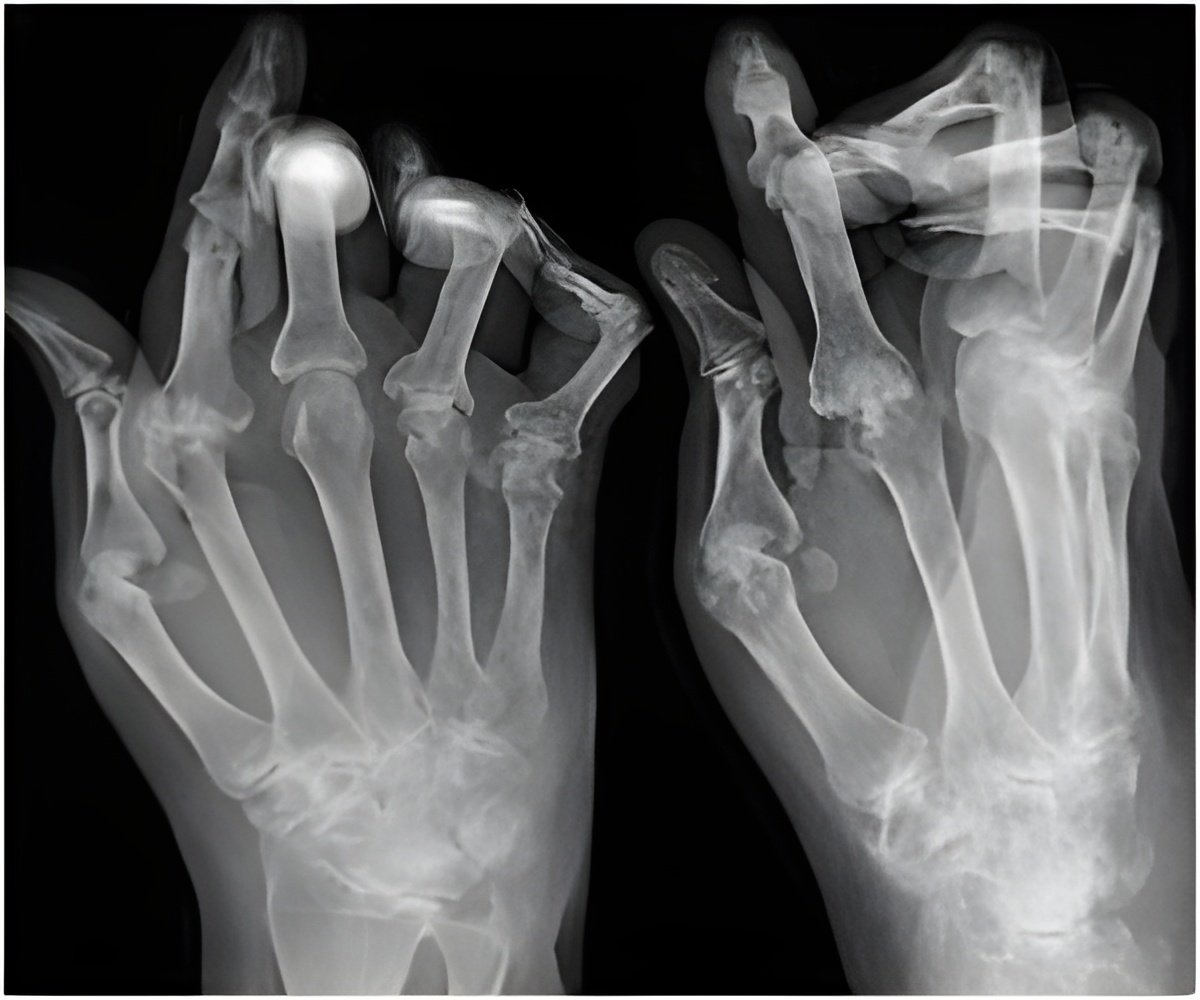Arthritis-linked mystery knee bone is more common in older people, more often found in men than women, and in people in Asia, said researchers.

‘Knees studied in Asia were most likely to have fabellae, followed by those from Oceania, South America, Europe, the Middle East, North America, with knees in Africa the least likely.’





Led by Dr Michael Berthaume at Imperial College London, a new meta-analysis has found that the mystery knee bone is more common in older people, more often found in men than women, and in people in Asia. This is the first time fabella prevalence has been studied in such detail by region, age, and sex, and the first to examine how these factors implicate genetic and environmental factors in fabella development.
Bare bones
From 1918 to 2018, the number of human knees donning seemingly useless fabellae - small bones buried in the tendon behind some knees - trebled.
The fabella, Latin for "little bean", is linked to knee pain, arthritis, and problematic knee surgeries. Dubbed the "appendix of the skeleton," fabellae, like other bones, start off as groups of cartilage cells. As a person grows, the cells can form into new bone - called ossification.
Advertisement
A bone of contention
Advertisement
Geographical region
Up to half the knees studied in Asia had a fabella, while up to one in five knees studied in Africa had one.
For this, the researchers looked at how fabella rates corresponded to geographical location in 65 studies spanning 21,626 knees.
Dr Berthaume said: "Assuming the ethnicities of the people studied match the region in which the studies were performed, our findings highlight how regionally-linked, genetic variation plays an important role in fabella formation. However, regional factors unrelated to genetics may also play significant roles."
Age
Fabellae appeared more frequently in older people, suggesting a person's chance of developing a fabella increases with age. This, the authors say, could be because older people are more likely than younger people to have experienced the mechanical stimuli to cause fabellae ossification.
This supports the role of environmental stimuli, in the form of mechanical stress, in fabella formation.
Many bones, like our sternums, or vertebrae in our spines, ossify at predictable ages - for example, we expect the shoulder blades to be fully formed by age 20.
However, the age analysis, based on ten studies spanning 4,391 knees and all ages, found that fabellae can ossify in people of almost any age, with some fabellae ossifying in children as young as 12, or possibly in adults as old as 70.
Dr Berthaume said: "Fabella are unique among bones in that they can appear at any age. They're more common in older individuals because they can appear as individuals grow."
Sex
Men were slightly (3%) more likely than women to have fabellae. They say the reason could lie in the difference in average muscle strength and tibial length between the sexes. Twenty-two of the studies, which included 7,911 individual knees, addressed sex's role in fabellae development.
Dr Berthaume said: "The fabella is a sesamoid bone - a tendon-bound bone that grows in response to mechanical forces like friction, tension, pressure, and stress. Larger muscles and longer shin bone in males produce more mechanical force, which explains why men are more likely than women to develop fabellae."
Two's company
Just over one in three (36.80%) knees worldwide have a fabella, and that, from looking at 37 studies that addressed the topic, one in seven (73.1%) people with a fabella in one knee have a fabella in their other knee.
The authors say this symmetry supports the role of genetics in fabella ossification. In people with only one fabella, they were just as likely to appear in the right knee as in the left. This lack of preference for either knee supports the role of environmental factors in fabella development.
Bones to pick
The team says the findings provide yet more insight into the genetic and environmental influences on human evolution over the past 150 years - and that fabella formation is probably due to a combination of both.
Dr Berthaume said: "Fabella formation is driven by complex interactions between nature and nurture. They're not a result of knee-jerk reactions to either genetics or environment alone. "Each factor studied here points to different drivers: Differences in fabella rates by sex and age suggest they're products of mechanical stress, whereas the likelihood of fabella appearance in both knees, along with differences in assumed ethnicity, suggest a more genetic driver."
Dr Berthaume said: "Your ethnicity, age, and sex all play a role in whether you develop a fabella. These new findings add to our previous hunch that better worldwide nutrition probably drove the fabella's resurgence, but that genetics and other factors, which we have yet to address, also play their part."
The fabella was once thought lost to evolution as humans evolved from old world monkeys into great apes. Dr Berthaume said: "It's found in four-legged monkeys, absent from great apes, and present in humans, which made us wonder why it disappeared in great apes and came back in us, with this dramatic 150-year resurgence."
The researchers say more research is needed to pinpoint the exact genetic and environmental combinations that drive fabella formation. Next, they will look at the links between activity level and fabella development.
Source-Eurekalert











